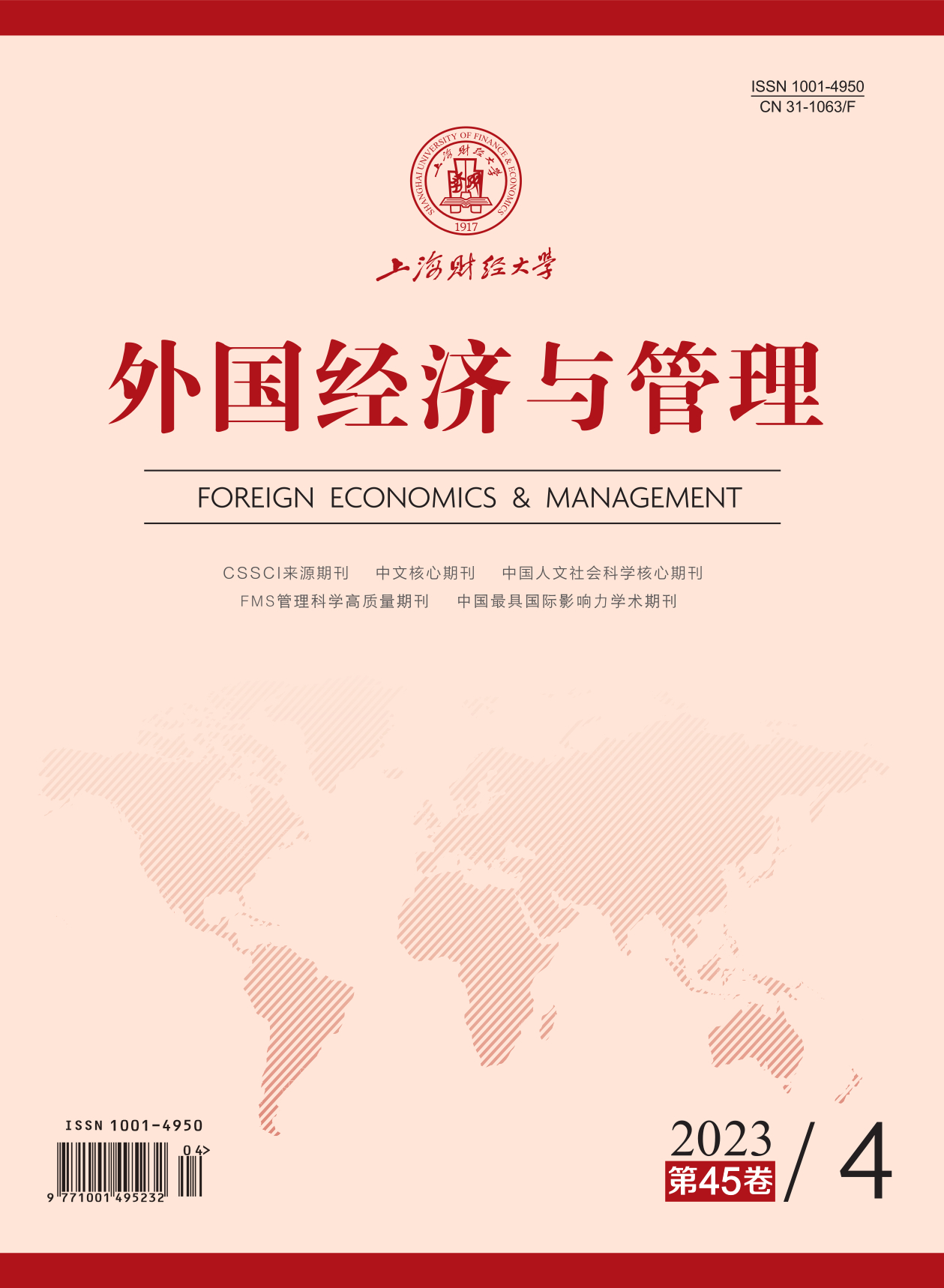家国情怀作为东方文化语境下的独特表达方式以及中国企业家实践中的常见现象,在管理学领域鲜少得到关注和研究。本文基于九如城从地产建设向养老服务转型的案例研究发现:企业家的家国情怀突出体现在“家国印记感念”“家国责任承诺”“义在利先追求”“义利轮回信念”四个特征维度;家国情怀通过培育企业家的转型初心、推动转型意义建构和情感管理、促进转型方向的识别等途径助力企业发起战略转型;家国情怀可以激发企业商业模式转型并在理想模式构想以及模式转型方向指引上发挥积极作用;家国情怀通过“价值观与共情能力筛选”“义在利先的传统文化导入与赋能”“赢得合作伙伴与政府信赖”等途径促进了与转型相关的人力资源、文化资源和关系资源的重构。本文澄清了家国情怀的内涵,为企业实施战略变革和履行社会责任的动因与过程提供了东方管理情境下的新解释,对于培育家国情怀、鼓励企业家实施公益性战略变革具有重要意义。
“家国情怀”如何驱动企业战略转型?
摘要
参考文献
2 李翔海. 儒家“义利之辨”的基本内涵及其当代意义[J]. 学术月刊,2015, 47(8): 15,16-22,15. DOI:10.19862/j.cnki.xsyk.2015.08.002
6 芮明杰, 胡金星, 张良森. 企业战略转型中组织学习的效用分析[J]. 研究与发展管理,2005, 17(2): 99-104,118. DOI:10.3969/j.issn.1004-8308.2005.02.016
11 吴颖. 孔孟义利观: 中国企业家社会责任的文化基础[J]. 南京社会科学,2010, (10): 144-149,155. DOI:10.3969/j.issn.1001-8263.2010.10.023
14 余英时. 中国近世宗教伦理与商人精神[M]. 北京: 九州出版社, 2014.
15 张倩. “家国情怀”的逻辑基础与价值内涵[J]. 人文杂志,2017, (6): 68-72. DOI:10.3969/j.issn.0447-662X.2017.06.010
16 Arikan I, Arikan A M, Shenkar O. Nation-dyadic history and cross-border corporate deals: Role of conflict, trade, generational distance, and professional education[J]. Strategic Management Journal,2020, 41(3): 422-466. DOI:10.1002/smj.3046
17 Aspara J, Lamberg J A, Laukia A, et al. Corporate business model transformation and inter-organizational cognition: The case of Nokia[J]. Long Range Planning,2013, 46(6): 459-474. DOI:10.1016/j.lrp.2011.06.001
18 Barr P S. Adapting to unfamiliar environmental events: A look at the evolution of interpretation and its role in strategic change[J]. Organization Science,1998, 9(6): 644-669. DOI:10.1287/orsc.9.6.644
19 Dixon S E A, Meyer K E, Day M. Stages of organizational transformation in transition economies: A dynamic capabilities approach[J]. Journal of Management Studies,2010, 47(3): 416-436. DOI:10.1111/j.1467-6486.2009.00856.x
20 Eisenhardt K M. What is the Eisenhardt Method, really?[J]. Strategic Organization,2021, 19(1): 147-160. DOI:10.1177/1476127020982866
21 Fehr R, Fulmer A, Awtrey E, et al. The grateful workplace: A multilevel model of gratitude in organizations[J]. Academy of Management Review,2017, 42(2): 361-381. DOI:10.5465/amr.2014.0374
22 Foss N J, Saebi T. Fifteen years of research on business model innovation: How far have we come, and where should we go?[J]. Journal of Management,2017, 43(1): 200-227. DOI:10.1177/0149206316675927
23 Frynas J G, Stephens S. Political corporate social responsibility: Reviewing theories and setting new agendas[J]. International Journal of Management Reviews,2015, 17(4): 483-509. DOI:10.1111/ijmr.12049
24 Gioia D A, Chittipeddi K. Sensemaking and sensegiving in strategic change initiation[J]. Strategic Management Journal,1991, 12(6): 433-448. DOI:10.1002/smj.4250120604
25 Gond J P, El Akremi A, Swaen V, et al. The psychological microfoundations of corporate social responsibility: A person-centric systematic review[J]. Journal of Organizational Behavior,2017, 38(2): 225-246. DOI:10.1002/job.2170
26 Helfat C E, Martin J A. Dynamic managerial capabilities: Review and assessment of managerial impact on strategic change[J]. Journal of Management,2015, 41(5): 1281-1312. DOI:10.1177/0149206314561301
27 Marquis C, Tilcsik A. Imprinting: Toward a multilevel theory[J]. Academy of Management Annals,2013, 7(1): 195-245. DOI:10.5465/19416520.2013.766076
28 Mathias B D, Williams D W, Smith A R. Entrepreneurial inception: The role of imprinting in entrepreneurial action[J]. Journal of Business Venturing,2015, 30(1): 11-28. DOI:10.1016/j.jbusvent.2014.07.004
29 Ocasio W, Laamanen T, Vaara E. Communication and attention dynamics: An attention-based view of strategic change[J]. Strategic Management Journal,2018, 39(1): 155-167. DOI:10.1002/smj.2702
30 Raffaelli R, Glynn M A, Tushman M. Frame flexibility: The role of cognitive and emotional framing in innovation adoption by incumbent firms[J]. Strategic Management Journal,2019, 40(7): 1013-1039. DOI:10.1002/smj.3011
31 Rothman N B, Melwani S. Feeling mixed, ambivalent, and in flux: The social functions of emotional complexity for leaders[J]. Academy of Management Review,2017, 42(2): 259-282. DOI:10.5465/amr.2014.0355
32 Schoar A, Zuo L. Shaped by booms and busts: How the economy impacts CEO careers and management styles[J]. The Review of Financial Studies,2017, 30(5): 1425-1456. DOI:10.1093/rfs/hhw111
33 Suddaby R, Foster W M. History and organizational change[J]. Journal of Management,2017, 43(1): 19-38. DOI:10.1177/0149206316675031
34 Tripsas M, Gavetti G. Capabilities, cognition, and inertia: Evidence from digital imaging[J]. Strategic Management Journal,2000, 21(10-11): 1147-1161. DOI:10.1002/1097-0266(200010/11)21:10/11<1147::AID-SMJ128>3.0.CO;2-R
35 Uhlenbruck K, Meyer K E, Hitt M A. Organizational transformation in transition economies: Resource-based and organizational learning perspectives[J]. Journal of Management Studies,2003, 40(2): 257-282. DOI:10.1111/1467-6486.00340
36 Xiao X, Tan B, Leong C, et al. Powered by ‘Qinghuai’: The melding of traditional values and digital entrepreneurship in contemporary China[J]. Information Systems Journal,2021, 31(6): 769-802. DOI:10.1111/isj.12301
引用本文
邓少军, 于保平, 苏勇. “家国情怀”如何驱动企业战略转型?[J]. 外国经济与管理, 2023, 45(4): 3-22.
导出参考文献,格式为:
上一篇:组织中的亲社会行为研究述评与展望





 6623
6623  7045
7045

